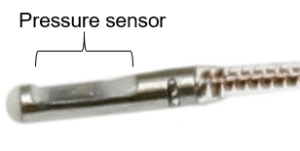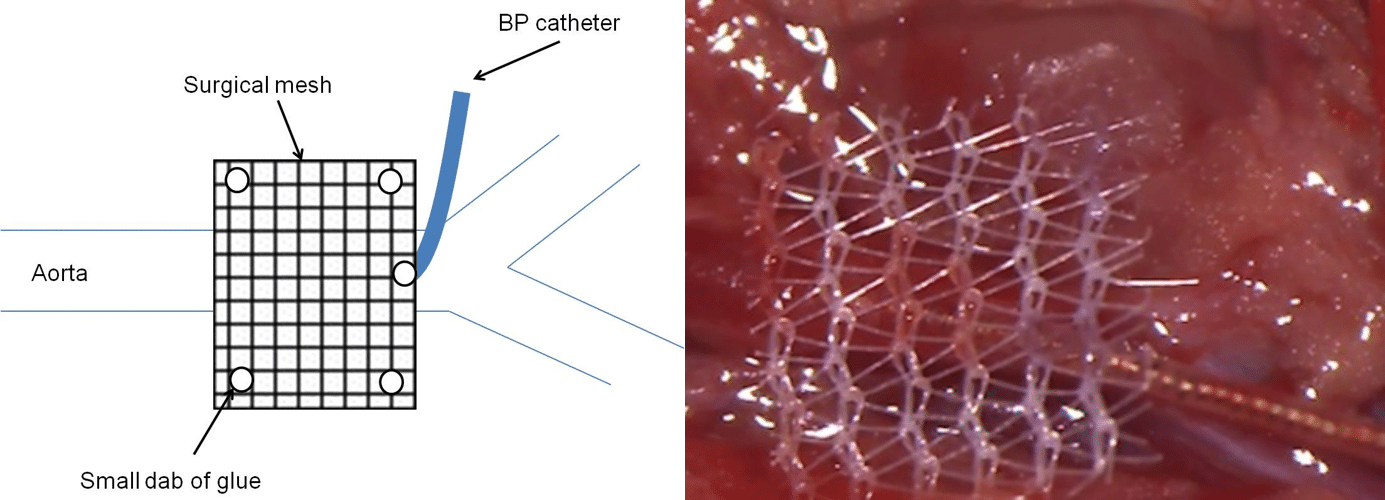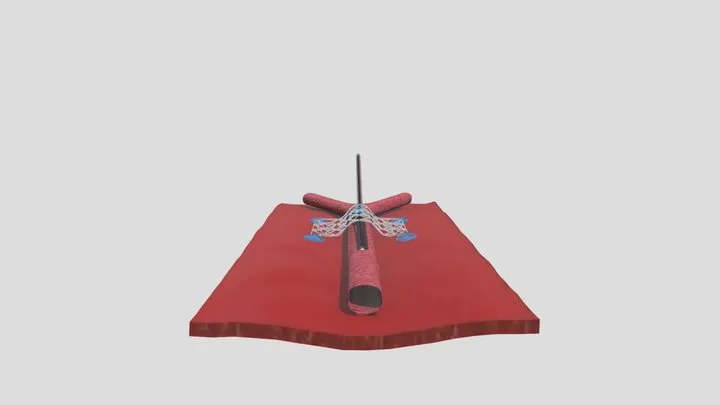Kaha rat pressure telemeters are fitted with a Millar Mikro-Tip® solid-state pressure sensor. The sensor is at the end of the catheter allowing highly accurate measurement of pressure signals directly where the tip is located. To measure arterial pressure, we recommend placement of the pressure catheter into the abdominal aorta. We have broken down the surgery into easy to follow steps with a short video for each.

Abdominal incision
- Midline skin incision recommended to avoid blood vessels.
- Midline incision allows easy access to separate abdominal muscle.
- Take care not to damage internal organs with scissor tips.
Isolating the aorta
- We strongly recommend to use a microscope.
- Carefully push aside intestines and expose abdominal aorta above the bifurcation to the iliac arteries.
- Use blunt dissection to carefully separate aorta from the underlying vena cava and surrounding tissue just above the bifurcation. Be careful as the vena cava is very thin and easily damaged.
- Pass thread under the aorta.
- Repeat and pass a second thread ~1.5cm proximal to the first.
- Look for any side branches.
Preparing for catheter insertion
- Have everything ready before occluding the aorta.
- Position the telemeter so that the catheter easily reaches the insertion point.
- A sharpened swab stick is useful for applying tissue adhesive.
- A catheter introducer can be made from a 22G needle.
Catheter insertion
- Take care not to pull the catheter out when placing the telemeter in abdomen.
- Ensure the catheter is not twisted or bent sharply.
- The telemeter must be placed so that it will be parallel to SmartPad when rat is standing on all four legs.
- Secure the telemeter to the muscle wall by using both of the suture tabs provided.
Surgical mesh for BP catheter implantation
Tissue adhesive can detach from tissue after a period of time allowing the catheter to pull out of the vessel. To avoid this, we recommend the use of a piece of surgical mesh at the time of implantation.
Connective tissue will grow into the mesh fabric holding the catheter in place and reducing reliance on the glue itself.
- Insert the catheter into the vessel and use the smallest amount of glue to hold the catheter in place.
- Dry the surrounding area using swab sticks.
- Cut a small square of surgical mesh (5 x 5 mm).
- Place the mesh over the aorta and catheter.
- Glue the mesh to the catheter using a small amount of glue to attach the mesh to the surrounding tissue. Take care not to add glue to the aorta itself or blood flow may be restricted when it dries.

How much glue should be used to secure the catheter?
It may be tempting to apply as much glue as possible with the hope that it will prevent bleeding and the catheter from being pulled out of the aorta. However, this will lead to poor recovery from surgery with animals having lame hind legs (unable to walk) due to reduced blood supply. This is also one of the main reasons for an animal dying following surgery.
It is important to use as little glue as possible to seal around the catheter and then use a mesh patch for extra security (see previous pages and videos).

How do I apply a small amount of glue?
Use a sharpened swab stick to apply glue a very small amount at a time. The video below shows the application of glue to the swab stick. Touch the glue on the interface between the catheter and the aorta. Apply it around the whole circumference of the catheter including underneath . Check for leaks by releasing a thread to allow some blood to fill the aorta while watching under the microscope. If a leak occurs take careful note of the exact point the blood is coming from, clean and dry the area and apply a small amount of glue to that point. It is better to apply glue a small amount at a time checking for leaks frequently than to apply a large amount at once.
Only a very small drop of glue is applied to the tip of the sharpened swab stick and then the excess should be removed by touching a piece of gauze.
Telemeter placement in the abdomen
- Take care not to pull the catheter out when placing the telemeter in the abdomen.
- Ensure the catheter is not twisted or bent sharply.
- The telemeter must be placed so that it will be parallel to the SmartPad when the rat is standing on all four legs.
- Secure the catheter to the abdominal muscle wall using both suture tabs.
Videos contain content hosted by Millar prior to the formation of Kaha Sciences. Kaha Sciences is an ADInstruments brand. Any contact details provided in videos are now out of date - For all product information or support, please contact us.
